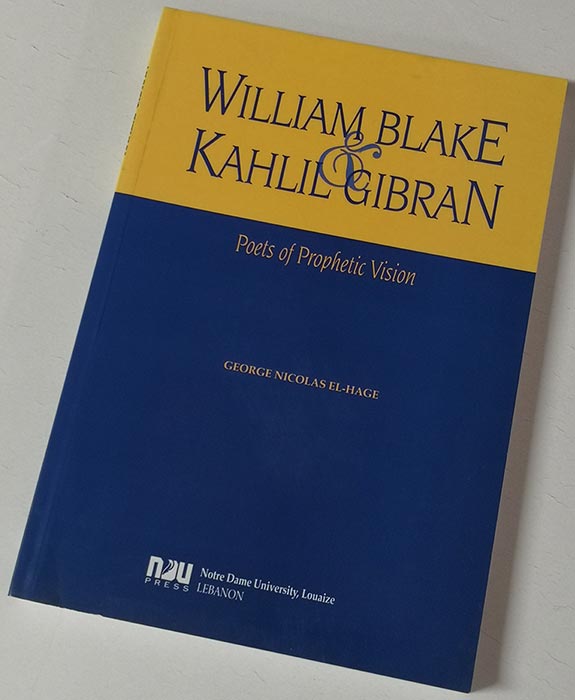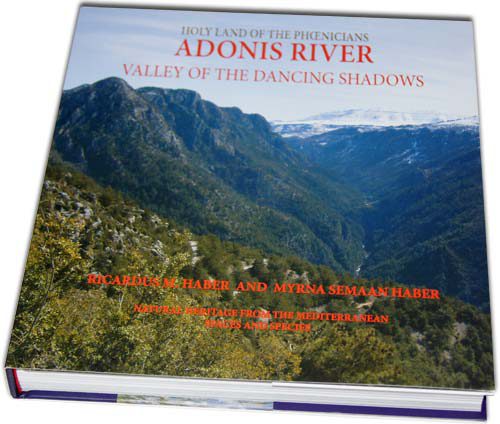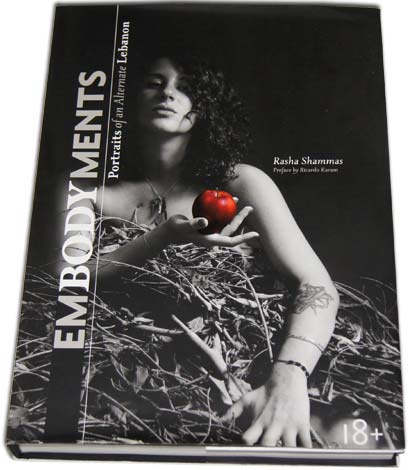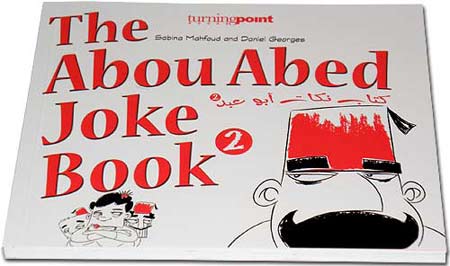William Blake and Kahlil Gibran ‘Poets of Prophetic Vision’ by George Nicolas El-Hage. Notre Dame University, Louaize, Lebanon – Book size: 24 x 17 cm – 171 pages.
William Blake and Kahlil Gibran ‘Poets of Prophetic Vision’
$11.30
Description
William Blake and Kahlil Gibran ‘Poets of Prophetic Vision’ by George Nicolas El-Hage
Notre Dame University, Louaize, Lebanon
Book size: 24 x 17 cm – 171 pages
Table of contents
Foreword – Dr. Boulos A. Sarru
Acknowledgments
Author’s Introduction
Chapter I – “A Mental Prince” or ” A Child of Light”
Chapter II – The Buds that will Blossom
Chapter III – New Vision
Chapter IV – A More Fertile and Daring Creator.
Chapter V – The God-man and the Antichrist
Selected Biography
Foreword:
We are all prophets by instinct, either in the way of proclaiming a prophecy or in accepting it; there is something intriguing in it that lures our pride to play God, and, when tempered by modesty, or fear, to harbor it in our holy of holies. From Adam to tomorrow the prophetic will always inform our thoughts, sentiments, and actions. Are we not beings in the making hurling ourselves into a status we wish to have? Even when we cower before the challenge of becoming and retreat into the false safety of fixism, our escape underlies our failure to grasp the prophetic.
The present study of William Blake and Gibran K. Gibran: Poets of Prophetic Vision by Professor George Nicholas el-Hage is a vocal proclamation of the nature and role of prophecy. A poet in his own right. Dr. Hage focuses his study on two renowned poets: the first, William Blake, is a forerunner of the Romantic Movement in England; the second, the Lebanese Gibran K. Gibran, is, by all critical acclaim, the author laureate of Oriental romanticism. What the two men shared is not to be resolved or determined in a study of influence or literary indebtedness, but to be assessed in terms of the acute prophetic vision which they both had. Though Dr. Hage, as a scholar and critic, addresses the issue of influence which Blake might have had on Gibran, he does not allow his argument to be overshadowed by critical opinion and historical data of similarities and contrast; he, very effectively, plays the role of a medium between the two poets to have a clairvoyant’s knowledge of three concerns: first, the nature of prophecy in each poet; second, the scope of the prophetic common grounds; and third, the realization of the prophetic vision.
Steering away from a conventional critical summary of the work at hand, I see that the prophetic vision is more possible in romanticism than in classicism; the first is vibrant, rebellious, and ambitious, the second is contained, measured, and decorously conservative. Whether the prophecy projects the future of the present, or a future opposite to the present, it is imperative that it begins in the real present and works its way to that which will be. The impact of the prophecy will be either to carry the recipients into its own realm, thus affecting its fulfillment, or to fail its purpose. The success or failure of the prophecy has no bearing on its essence; it is the failure of the recipient, and inadvertently of the Herald.
William Blake envisioned a world of the ingredients of four zoas of body and spirit to outbalance the four elements of matter constituting the visible world of experience. And thought the paradox of innocence and experience seems inviting, Blake did not fall for the simplicity of the obvious frame of reference. In a sense, he acknowledges the materiality of the world – which is the tangible reality of the vision – to go from it to the transcendent.
Gibran, in turn, was neither alien to Blake’s vision nor, most importantly, to his own. The Lebanese Brahmin was frustrated with a world of “hypocrisy, corruption, and falsehood”; but he was not intimidated by it. Even in the thunderous storms of the early works – gracefully analyzed by Dr. Hage – the serenity of the prophetic vision is clearly manifest. The ugliness of priestcraft is undermined by the beauty of God’s beautiful world; the suppression of the tyrant is foiled by divine mercy and compassion. This positive vision is imperative, hence prophetic.
The vision is by necessity transcendent, but not necessarily an immediate transformation of the base into noble, or a mere bestowing of an “above” value on a “below” object as initial transcendentalism is. The transcendent value is entrenched in the base real and rendered positive and accessible via imagination. Imagination is the alembic of the prophetic vision as it provides this vision with the tools and catalysts of formation and transformation. More so, the imagination is an accessible venue for the knowing soul to express herself through the mediums of image, color, and myth. The active soul, envisioning a world seen only by her, communicates this vision through imagination. Through this communication of prophecy, the imagination is the artist’s tool hopeful of awakening the receiving souls to the vision. Once these receiving souls become “in vision” of “the vision” the prophecy is realized.
Gibran read Blake and discovered his affinities with the English bard, discovered that he had already had his vision. And he had confessed: his second reading and a real understanding of Blake made him more aware of this vision. This awareness, unshared by the multitudes and unreached by the skeptics and the “realists,” placed the two men, like many others who tread the path of vision, on a plane different, unorthodox, and “mad.” And if the two men were labeled mad, it is to their credit then otherwise. After all, are not “all great things touched with madness,” to use Herman Melville’s assertion? Or is not madness in art and act of creation? I hail Blake’s and Gibran’s prophetic vision, and Dr. Hage’s controlled madness.
Boulos A Sarru’, PhD
Professor of English and American Studies, Dean of Humanities, Notre-Dame University, Lebanon, July 10, 2002
Additional information
| Weight | 0.5 kg |
|---|---|
| Dimensions | 1 × 1 × 1 cm |






